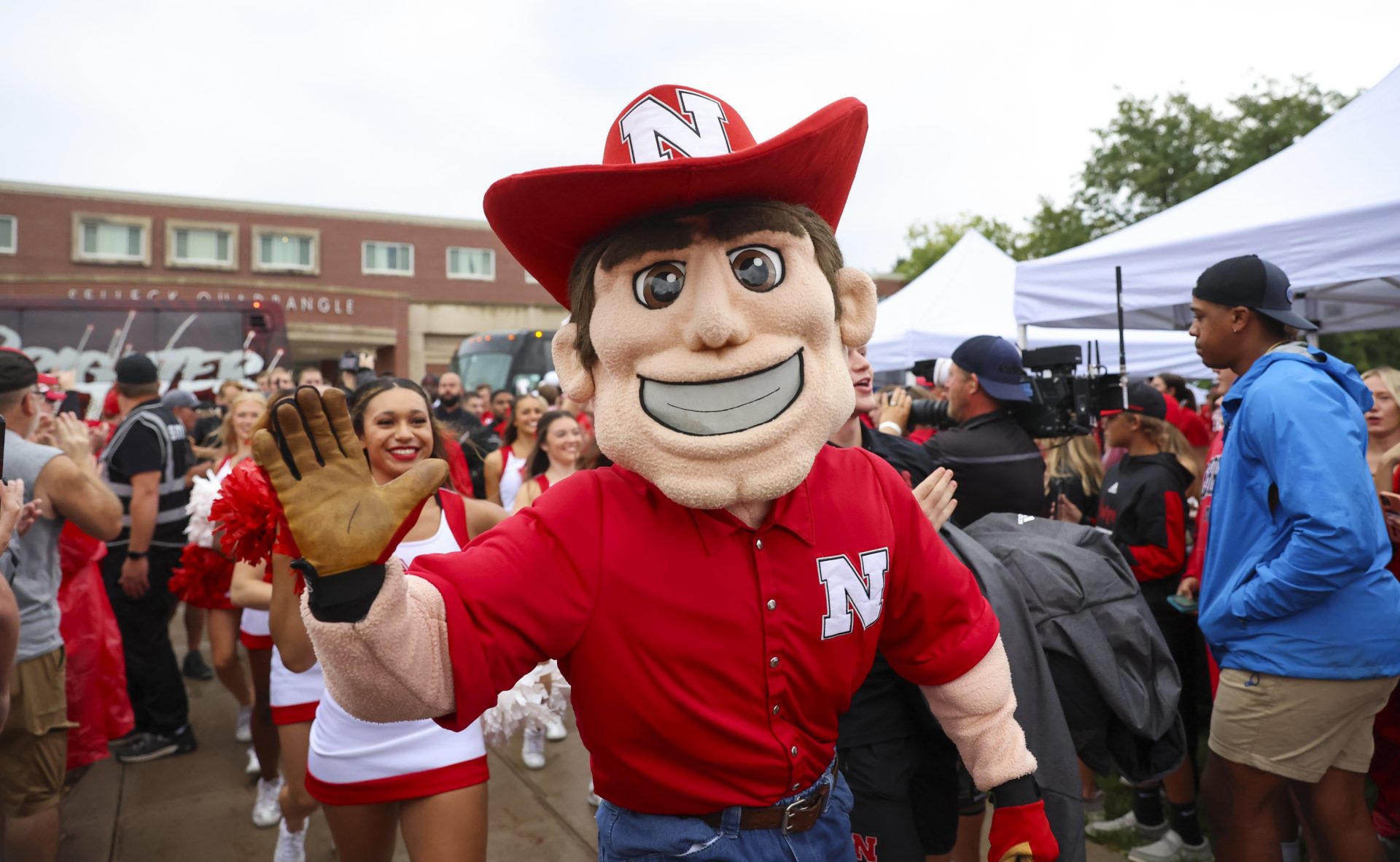College football is unique for several reasons, chief among them the pageantry and pride shown for programs by alumni and fans alike. No amount of pageantry would be complete without the role of mascots.
There are over 134 different teams in FBS, with as many varied backgrounds as there are teams. Uniquely, Nebraska is the only school represented by the Cornhusker at the Division I level. How did the mascot come to be, and in what ways does the history help tell the story that the Cornhusker now represents?

Who (or What) Is the Nebraska Cornhuskers Mascot?
Nebraska hasn’t always been known as the Cornhuskers, or Huskers for short. The university was founded in 1869 and has always been known as the University of Nebraska, despite the addition of the Lincoln campus designation in 1968 after absorbing the Municipal University of Omaha.
Early designations of mascots included names like the Old Gold Knights, Antelopes, Rattlesnake Boys, and the Bugeaters. The initial name of Old Gold Knights was dropped when the official school colors of Scarlet and Cream were adopted in 1892, forcing a nickname change to the Bugeaters.
The name was derived from the insect-devouring bull bats that patrolled the plains of Nebraska. They remained the mascot until the first losing season, sustained in 1899.
It was at the dawn of the century that Lincoln sportswriter Charles S. Sherman, who had grown tired of the nickname and is known as one of the original founders of the Associated Press Poll, decided to call the team the Cornhuskers. Sherman had borrowed the nickname from Iowa, but fans of Iowa’s program had preferred the nickname Hawkeyes, and so, the Husker nickname stuck.
The nickname became so popular among fans that it eventually became the official nickname of the state of Nebraska as well. While there was no official symbol to represent the Cornhusker, several cartoonist renditions have been created throughout the years, some embracing the nickname and some evoking ire from the Nebraska faithful.
The Cornhusker name is also not specifically defined, although it is simple enough that one can surmise what a Cornhusker does. Given the state’s agricultural identity and the importance of corn to the local economy, the term has resonated and evolved to embrace a bigger cultural significance for Nebraska natives.
Why Is Nebraska the Cornhusker?
The Cornhusker name was fully embraced by the local fans. Thus, the search for a physical representation of what a Cornhusker could be was begun.
The initial attempt, a Corncob Man, was a simple figure with a corncob for a body that was used on promotional materials but never had a live version in the 1940s.
In 1955, the university made a different attempt by introducing the Corn Cob, a physical mascot featuring a student dressed in a cornhusk-like costume. The mascot made appearances at various events, including football games, but it was never fully embraced.
The next iteration in the search for a physical representation was born in 1962. Herbie Husker was created by Bill Goggins, a local artist, and was depicted as a farmer wearing overalls wearing an ear of corn on his head like a hat. The initial version was not a physical mascot but appeared on department stationary and promotional materials.
BY 1974, Herbie had become popular enough that Nebraska created a live mascot that debuted at football games. The costumed version featured a tall, burly man with a large head that donned blue overalls with a red long-sleeved shirt and was adorned with a red cowboy hat. As the cartoonish version had already been embraced, this physical version became a popular hit with fans and has continued since.
There have been multiple versions of Herbie throughout the years, with the most recent makeover occurring in 2003.
This makeover transformed the overall-clad farmer into an athletic, imposing figure with a red cowboy hat, red shirt, blue jeans, and work boots in an attempt to modernize the image while continuing to embrace the state’s agricultural roots.
MORE: Simulate the College Football Season With CFN’s College Football Playoff Predictor
A second mascot, Lil’ Red, was introduced in 1993 to appeal to younger fans and embrace a family-friendly element for games and events. Lil’ Red was an inflatable version of the mascot that could perform acrobatic stunts and interact with fans in unique ways, despite the two mascots often appearing together.
While the Cornhusker wasn’t created by the Nebraska faithful, their embrace of the unique and original concept has linked the state and university in a way that promotes the hard work, agricultural identity, and continued growth that Nebraska fans hope to see reflect their program in addition to the state.
College Football Network has you covered with the latest news and analysis, rankings, transfer portal information, top 10 returning players, the 2024 college football season schedule, and much more!

